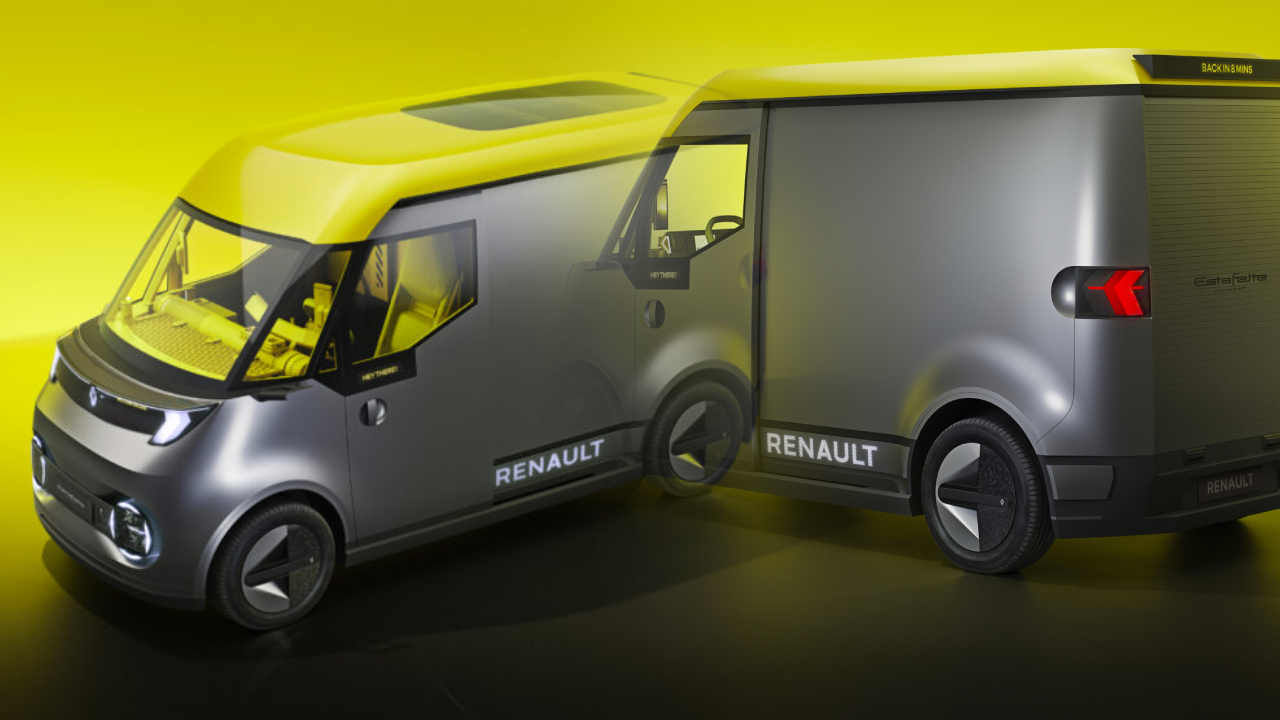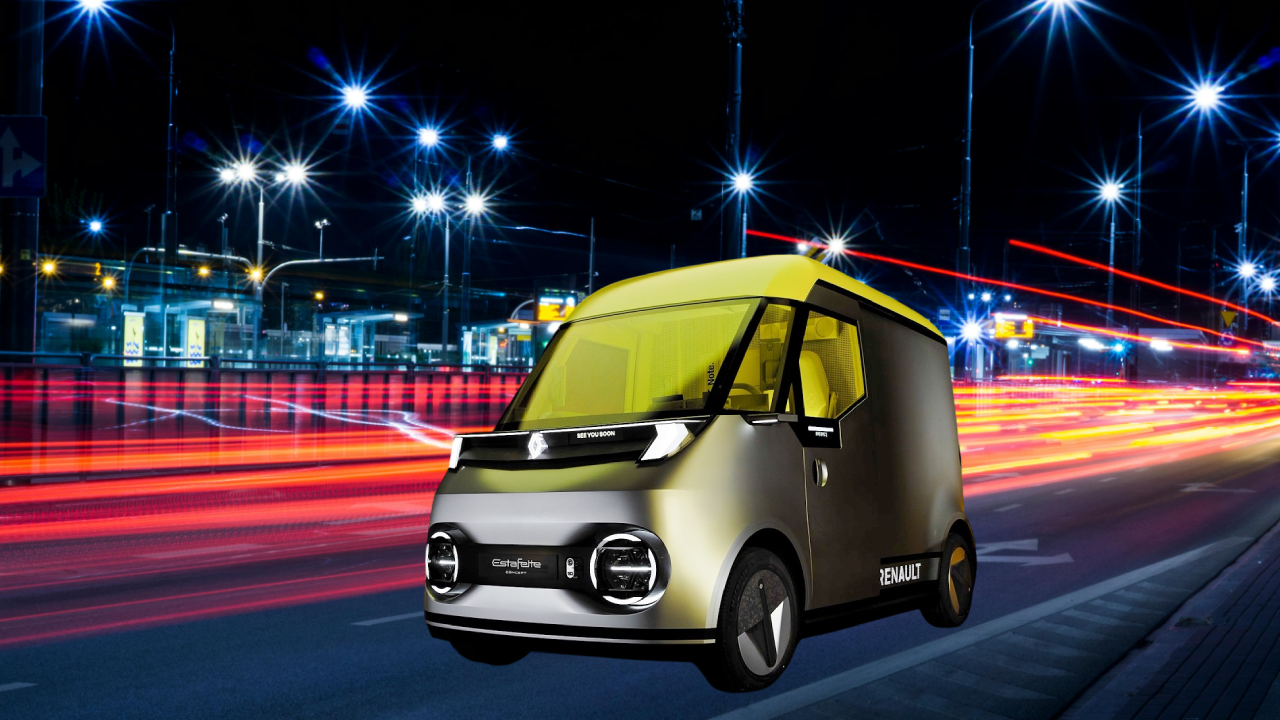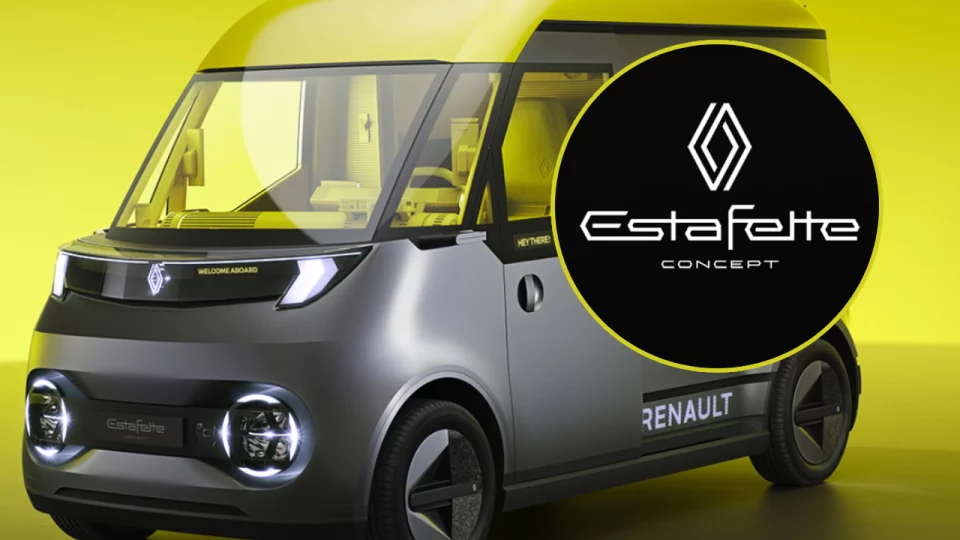Renault has long been a trailblazer in the automotive industry, and now, with its innovative Estafette Concept, the French automaker is setting the stage for what could be a game-changing transformation in urban logistics. In a world increasingly reliant on delivery services—fueled by e-commerce, groceries on demand, and same-day shipping—the need for efficient, sustainable, and city-friendly delivery vehicles has never been more pressing.
Renault’s Estafette Concept promises to answer this need, blending retro charm with futuristic tech in an all-electric utility vehicle that aims to reimagine the way we think about deliveries.
Table of Contents
A Nod to the Past, an Eye on the Future
The Estafette name itself is a throwback to Renault’s iconic delivery van from the 1960s, a model that became synonymous with French urban mobility. The new Estafette Concept borrows this name to invoke a sense of nostalgia while delivering a thoroughly modern vehicle, both in form and function. Although it has a retro look, especially with its circular headlights and arrow-like taillights, the concept vehicle is packed with cutting-edge technology and innovation that points squarely toward the future of electric utility vehicles.
Renault’s vision for this concept is not just to create another electric van, but to redefine what an urban delivery vehicle can be. Created under the Flexis group—a joint venture between Renault, Volvo, and other key partners—the Estafette Concept will be the first to use Renault’s new ‘FlexEVan’ platform. This platform is designed with flexibility in mind, allowing for different configurations and modularity that make it adaptable to various commercial needs.
Proportions and Design: Unconventional but Practical
At first glance, the Estafette Concept may look like a box on wheels, but this seemingly simple design serves a crucial purpose. Proportionally, it’s similar to Renault’s popular Kangoo model in length, but it stands out with a broader and taller body, giving it a unique silhouette. Despite the seemingly awkward dimensions, the Estafette Concept offers a load capacity comparable to larger vehicles like the Renault Trafic. This feat of “intelligent packaging” ensures that the vehicle can haul significant amounts of cargo while remaining compact enough to maneuver through narrow city streets.
The design takes a further step into practicality with several user-friendly features. The Estafette’s sliding doors are equipped with a pulley mechanism that makes them easier to operate, reducing strain on delivery drivers who frequently load and unload packages. The absence of a tailgate at the rear is another practical touch, replaced by a shutter system that makes accessing the cargo bay more efficient. For drivers constantly on the go, these small innovations could add up to big improvements in comfort and convenience.
A Design That Stands Out
From an aesthetic perspective, the Estafette Concept strikes a balance between retro charm and futuristic design elements. The circular headlights pay homage to the original Estafette, while the sharply descending bonnet line and big grille offer a modern touch. The fog lamps, nestled within the grille, have a retro-futuristic appeal that gives the vehicle a distinctive character on the road. The taillights also feature arrow-like indicators, which not only look sleek but also serve a functional purpose in urban driving environments where visibility is key.

One of the standout features of the exterior design is the vehicle’s curved windscreen, which is supported by ultra-thin pillars. This design element significantly improves visibility for the driver, enhancing safety and maneuverability in busy urban environments. For a vehicle that is primarily designed to operate in cities, such considerations are critical, and Renault has clearly made driver visibility a priority.
Technology and the Driver Experience
When it comes to technology, the Estafette Concept is packed with features aimed at making the driver’s job easier and more enjoyable. The cabin is designed with simplicity and functionality in mind. A single swivel seat faces a series of screens, including a seven-inch driver display and a 12-inch infotainment unit. These screens provide all the essential information a driver needs, from navigation to cargo management, and are laid out in a way that minimizes distraction.
Moreover, the Estafette Concept includes two vertical 10-inch digital wing mirrors, a modern replacement for traditional side mirrors. These digital mirrors provide real-time visuals of the surrounding environment, making it easier for the driver to navigate tight spaces. For a vehicle that will likely be used for city deliveries, where every inch counts, this feature is particularly valuable.
In addition to the primary screens, the dashboard is also equipped with smaller screens that display widgets designed to assist the driver with various tasks. Whether it’s managing deliveries, checking traffic conditions, or even providing entertainment during downtime, these widgets aim to make the driver’s day-to-day tasks more efficient and less monotonous.
Storage space is another area where the Estafette excels. The cabin includes numerous cubbyholes and compartments, perfect for stashing small items like parking tickets, personal belongings, or even snacks. This attention to detail ensures that drivers have everything they need within arm’s reach, further enhancing the practicality of the vehicle.
Sustainable and City-Friendly

Renault’s Estafette Concept isn’t just about making deliveries more efficient; it’s also about making them more sustainable. As cities around the world grapple with the environmental impact of increasing urban deliveries, the shift toward electric vehicles is essential. The Estafette Concept is fully electric, designed to reduce emissions and noise pollution in urban areas, making it a perfect fit for cities that are moving toward greener, quieter transportation options.
The vehicle also incorporates software that provides real-time updates to drivers and fleet managers. This includes a feature called ‘predictive maintenance,’ which helps prevent breakdowns by alerting drivers to potential issues before they become major problems. This type of proactive maintenance can reduce downtime and ensure that fleets operate more efficiently, further contributing to the vehicle’s sustainability credentials.
Philippe Divry and the Future of Urban Logistics
Philippe Divry, the CEO of Flexis, has high hopes for the Estafette Concept and its potential to revolutionize urban logistics. According to Divry, the goal is to make delivery operations more sustainable, safer, and more driver- and city-friendly. The Estafette Concept, with its compact design, advanced connectivity, and electric powertrain, is the first step toward achieving this vision.
In Divry’s words, “Estafette Concept is the first example of what electric utility vehicles will look like tomorrow: purpose-engineered to drive in cities, compact, connected, and built for fully sustainable delivery services.” This emphasis on purpose-built design highlights Renault’s commitment to addressing the unique challenges of urban deliveries, from reducing environmental impact to making life easier for drivers.
The FlexEVan Platform: A Foundation for Future Growth
One of the most exciting aspects of the Estafette Concept is that it is the first vehicle to ride on Renault’s new FlexEVan platform. This platform is designed to be adaptable, making it easy for Renault to create different versions of the vehicle to suit various needs. Whether it’s a larger model for long-haul deliveries or a smaller version for quick city drop-offs, the FlexEVan platform offers the versatility needed to cater to a range of commercial applications.
This modularity also means that Renault can stay ahead of the curve as the needs of urban logistics evolve. As cities become more congested and regulations around emissions tighten, having a flexible platform allows Renault to adapt quickly to new challenges. The Estafette Concept is just the beginning of what could be a broader revolution in the way we think about commercial electric vehicles.
